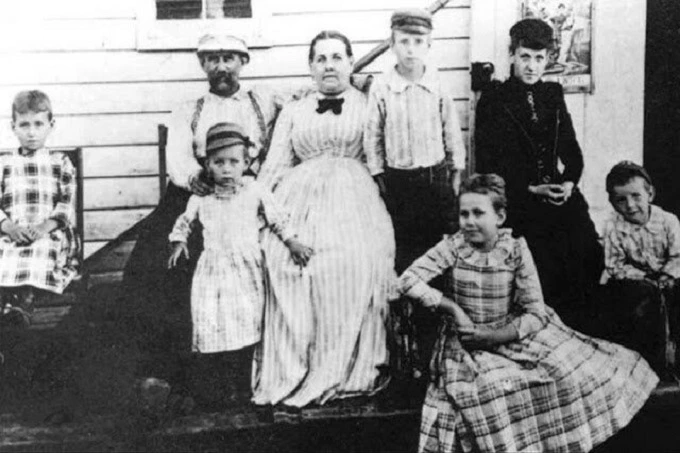Nikola Tesla is a physicist, engineer, and one of the greatest scientists of the twentieth century who changed the world forever with his discoveries. Books are written, and films are made about him, but some of the facts of his amazing biography are still little known to posterity.

Tesla was born during a thunderstorm
Nikola Tesla was born on July 10, 1856, during the worst of the thunderstorms that rarely occur in Serbia. It is said that the midwife who delivered the baby considered it a bad omen, saying that the child was a child of darkness. But it was Tesla’s mother who prophetically replied, “No, it will be a child of light!”
Nikola Tesla had obsessive-compulsive disorder
A number of personal qualities of Tesla lead modern psychiatrists to say with certainty that Nikola Tesla suffered from obsessive-compulsive disorder. He had quite a few everyday manias: for example, he was obsessed with the number 3, hated jewelry, round-shaped objects, and touching his hair.
He especially hated pearls and refused to even talk to women wearing pearl jewelry. He even sent his secretary home if she inadvertently wore pearls. In addition, Tesla suffered from insomnia and claimed that he needed only a few hours of sleep at night – although he would occasionally go to bed during the day to take a nap.
Tesla suffered from a manic cleanliness
After nearly dying of cholera as a teenager, Tesla became maniacally afraid of germs. He had elaborate and multi-step hygiene rituals; he used 18 napkins every night to wipe objects in the dining room, and he always wore white gloves to lunch and dinner.
Nikola Tesla was a great humorist
Nikola Tesla had a great sense of humor, and his jokes always delighted his friends. Even such a linguist and wordsmiths as Rudyard Kipling, who was also a friend of Tesla’s, admired his great sense of humor.
Tesla had a lifelong rivalry with Edison
Tesla and Edison were lifelong rivals, but that did not make them enemies. On the contrary, they treated each other with great respect. For example, when Edison once came to Tesla’s public lecture and, wishing to remain unnoticed, hid in the back rows, Tesla, noticing him, loudly greeted the great inventor and, urging the audience to greet him with applause, was the first to applaud his rival. Following Tesla’s example, the crowd gave Edison a standing ovation.
It was Tesla that first invented wireless Internet and smartphones
It’s hard to believe, but it was Tesla, back in 1901, who came up with the idea that later became the basis for smartphones and the advent of the wireless Internet. He experimented with wireless transmission of energy and suggested trying to transmit information in the same way, converting it into a signal and transmitting it to a personal wireless device. However, in those years, Tesla never succeeded in implementing this idea.
Tesla had an extraordinary memory
The great scientist had a fantastic memory: he could recite by heart a book he had read or describe a drawing he had seen once, without missing a single detail. This helped him to present his inventions in a ready-made form, drawing them in his imagination in 3D and then precisely transferring them to paper.
Tesla spent most of his life in hotels
Throughout his life in America, Tesla lived in New York City, in Manhattan. However, he did not have his own place – he lived in hotels, moving from one to the other as his own tastes and his financial situation changed. On prosperous days he lived in the famous Waldorf Astoria Hotel; on less prosperous days, he lived in less-wealthy hotels. Tesla never bought his own home and, paying very little attention to his spending, he died in poverty.
Many of Tesla’s inventions still remain secret
Tesla died in 1943, but many of his inventions are still classified by the U.S. government as state secrets. Most likely, they are related to military developments, although some say that Tesla had something to do with contacts with aliens.
German spies used the tower Tesla built
In the early 1900s, Tesla built a tower on Long Island, New York, for experiments with wireless transmission of electricity. This tower, known as the Wordencliffe Tower, stood until the outbreak of World War I. After it began, U.S. authorities suspected that German spies were using the tower to transmit radio messages, and it was blown up for national security reasons. The remains of the tower are now in the Tesla Museum.
Without Tesla’s inventions, our world today would not be the same
Nikola Tesla’s research was the basis for many of the inventions that have become commonplace in the world today. Fluorescent lights, X-ray machines, radio, television, cellular phones, and many other things were created directly from Tesla’s inventions.
Back in 1917, when Tesla was awarded the Edison Medal for his inventions, the host of the ceremony said, “If you take Tesla’s inventions out of our world, factories will stop working, machines will stop working, and cities will be plunged into darkness”.
